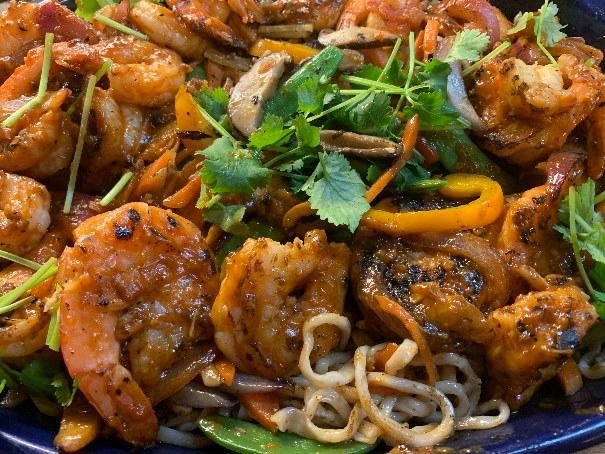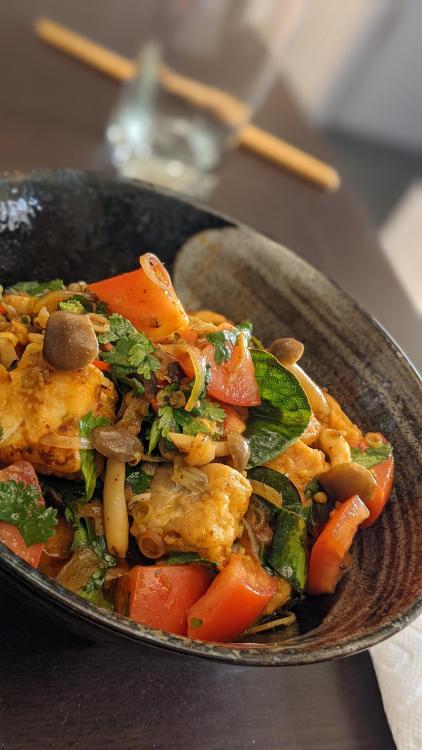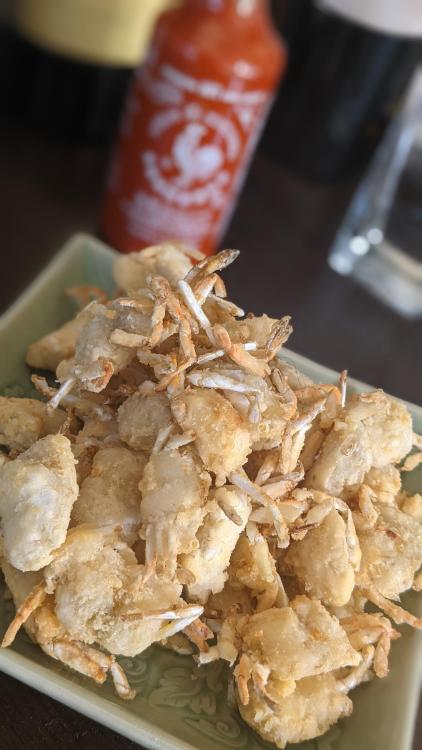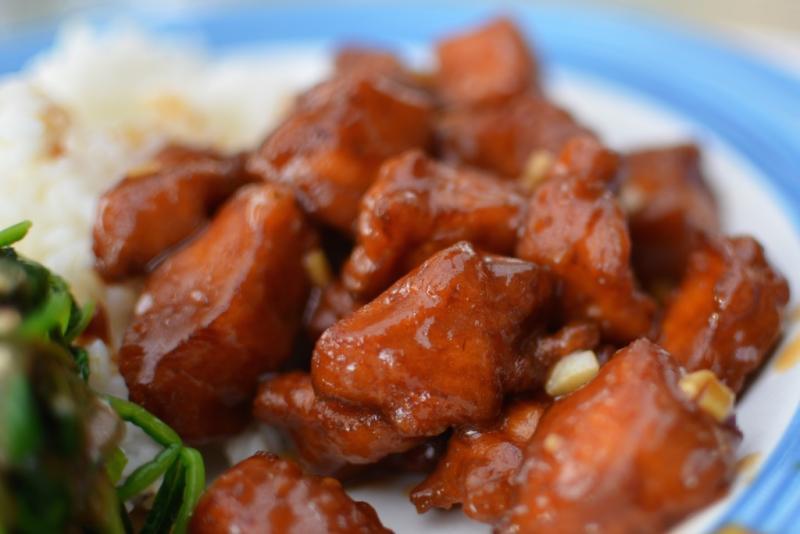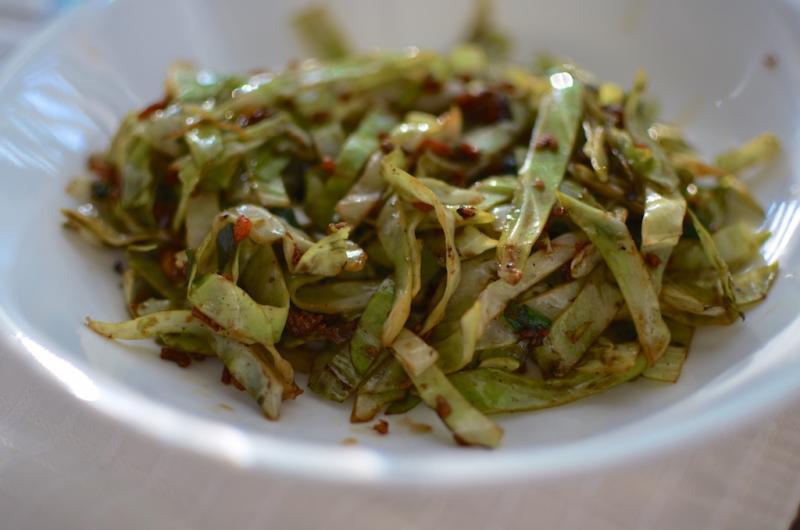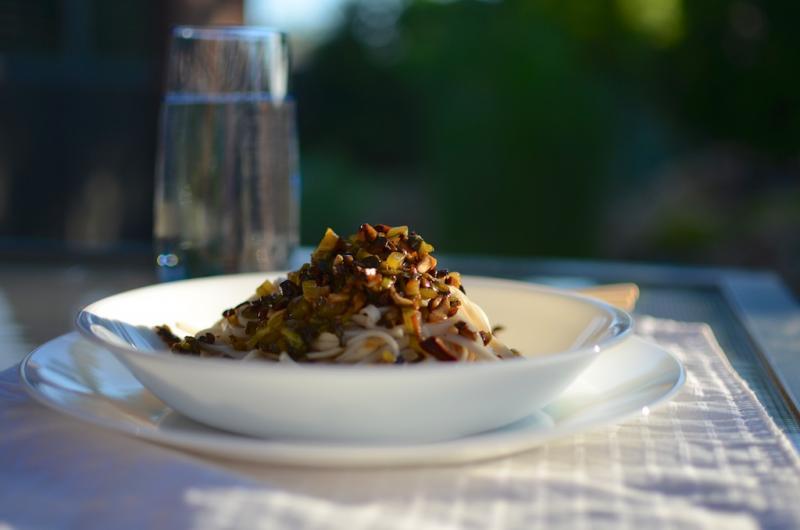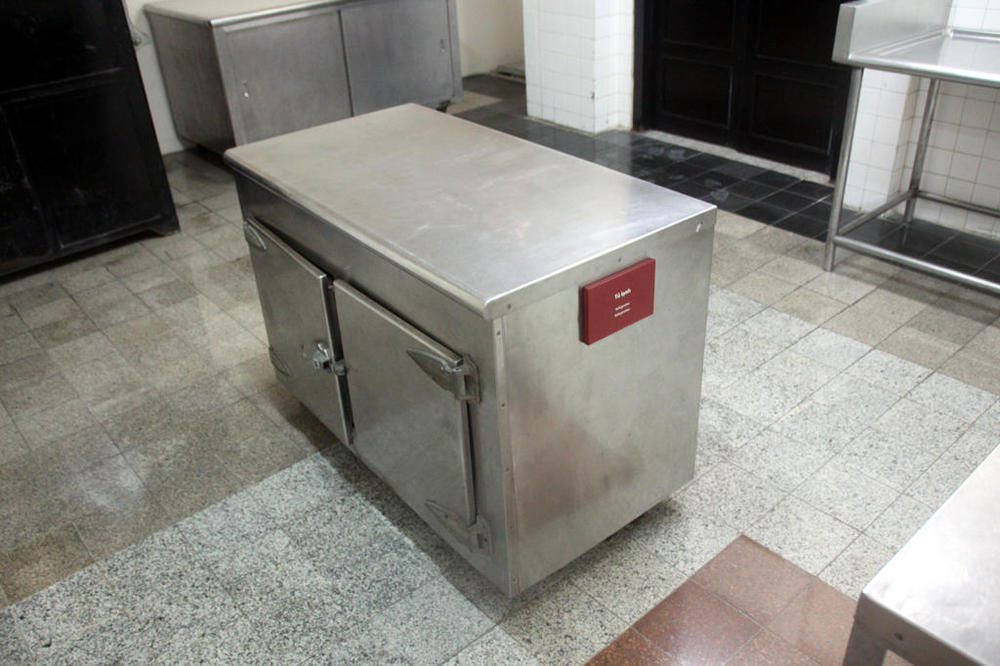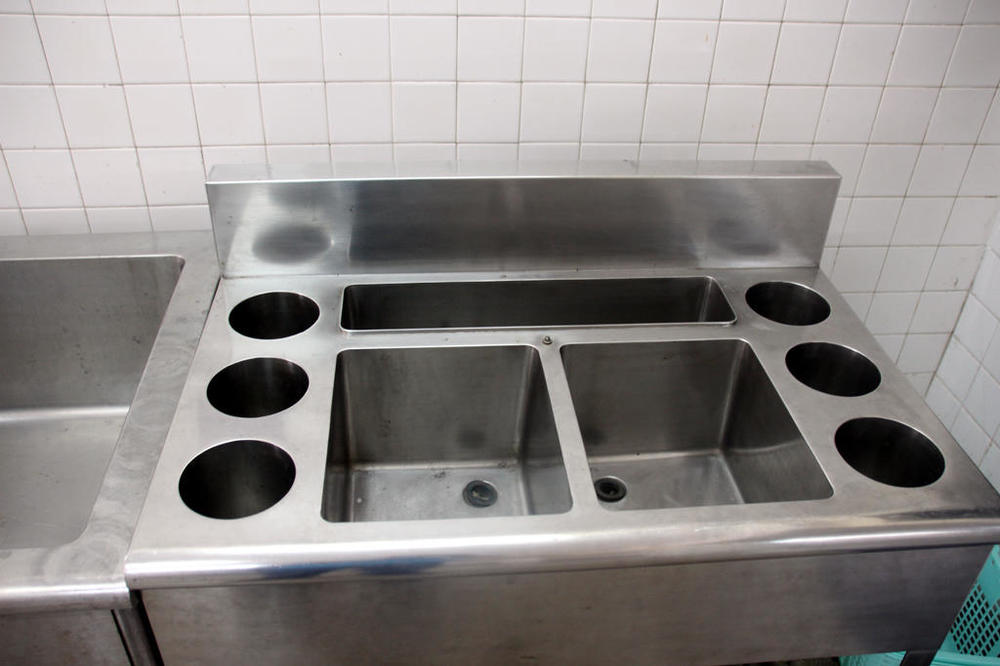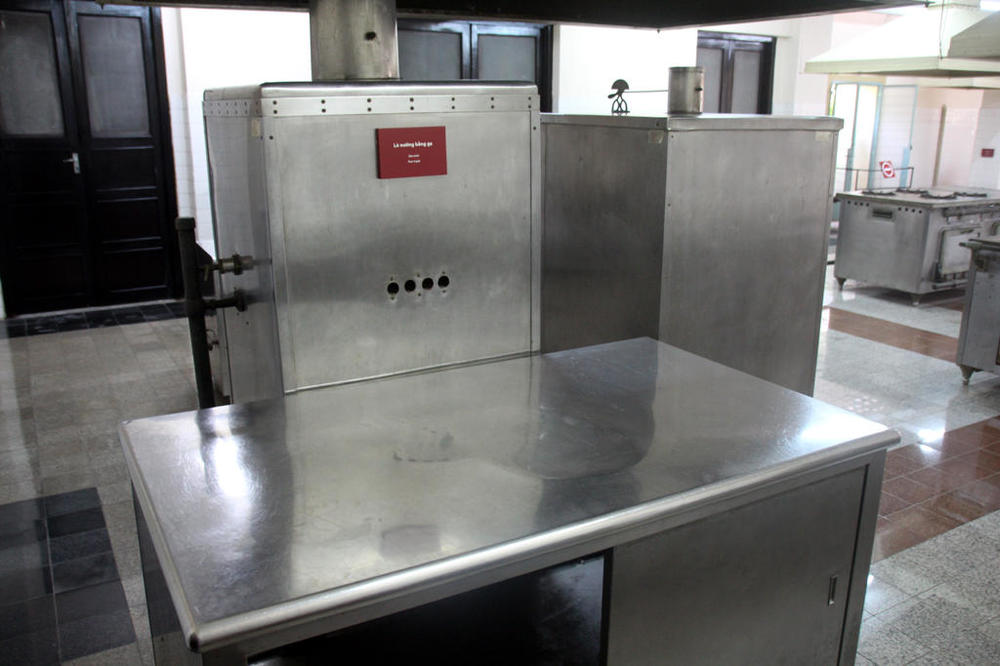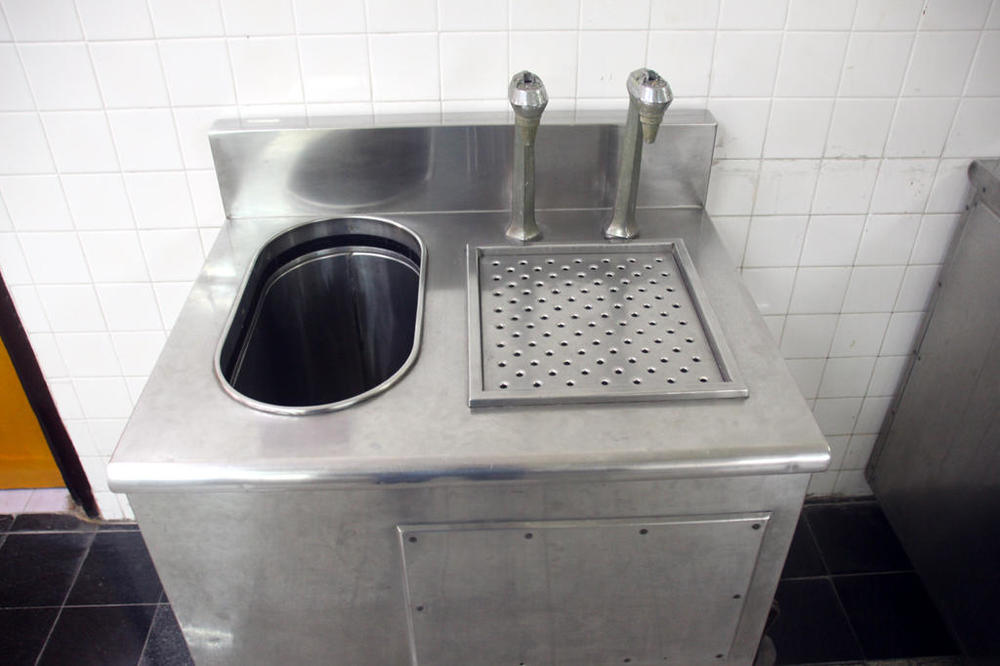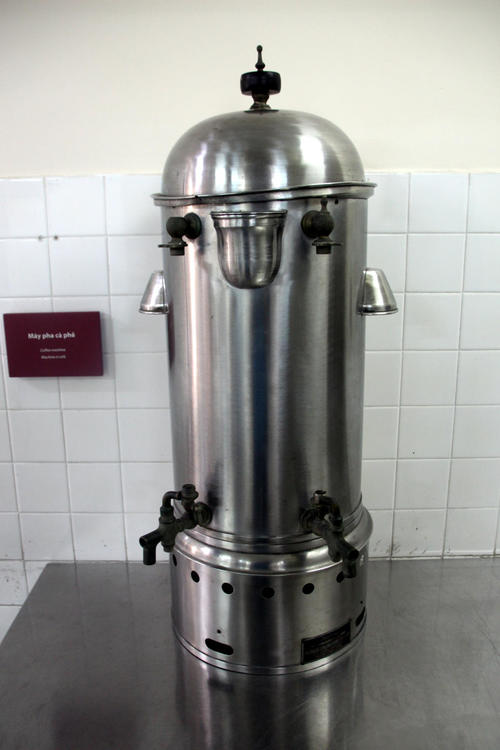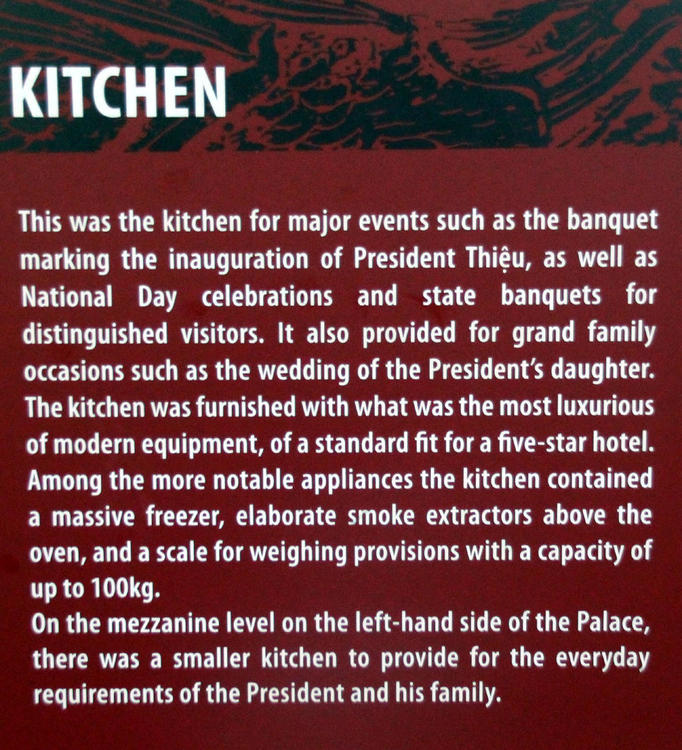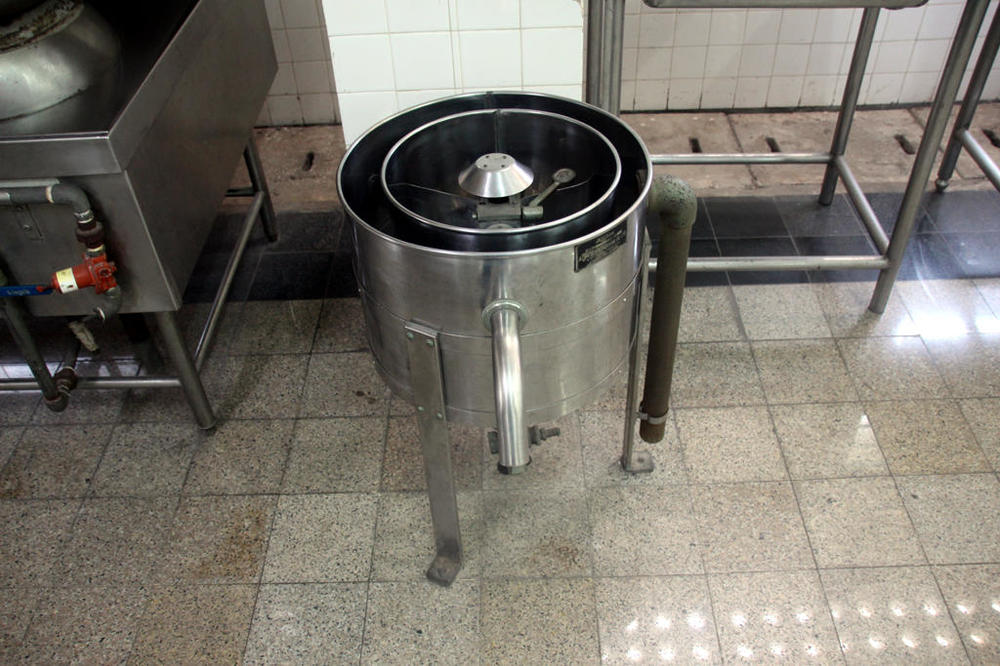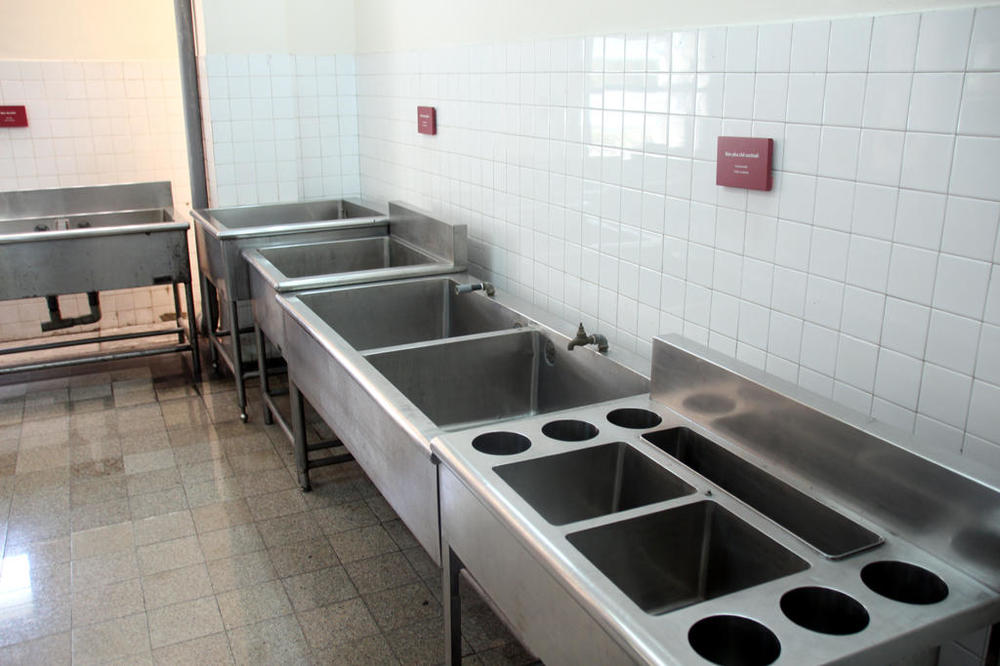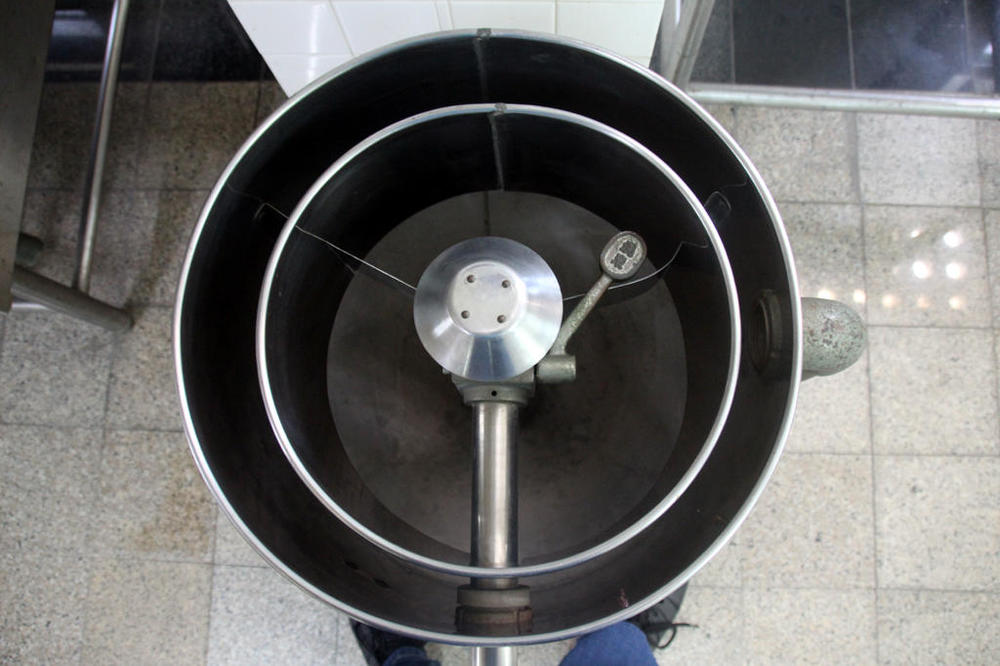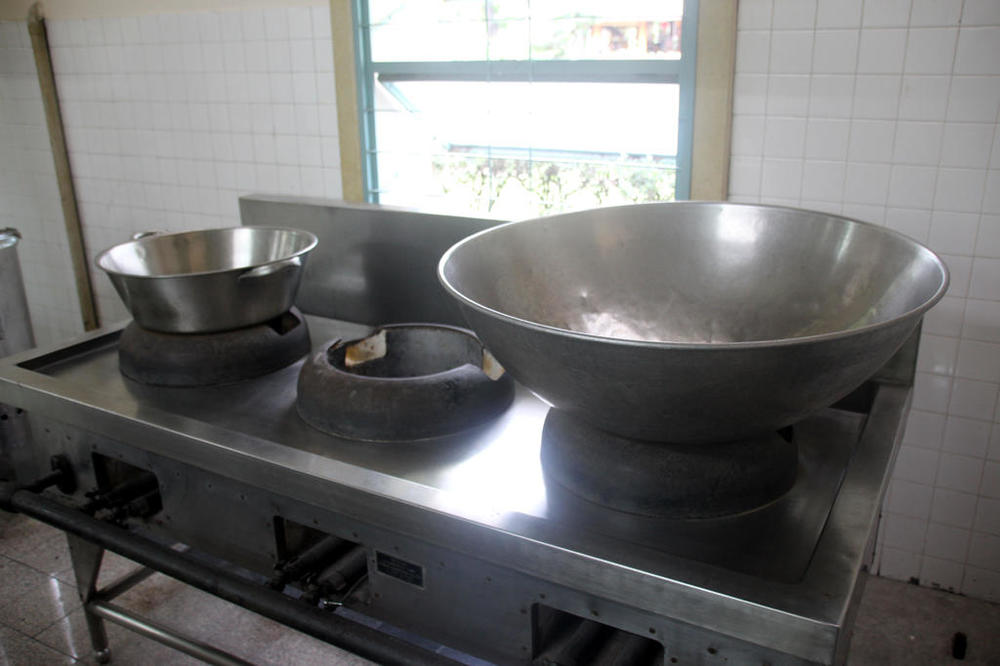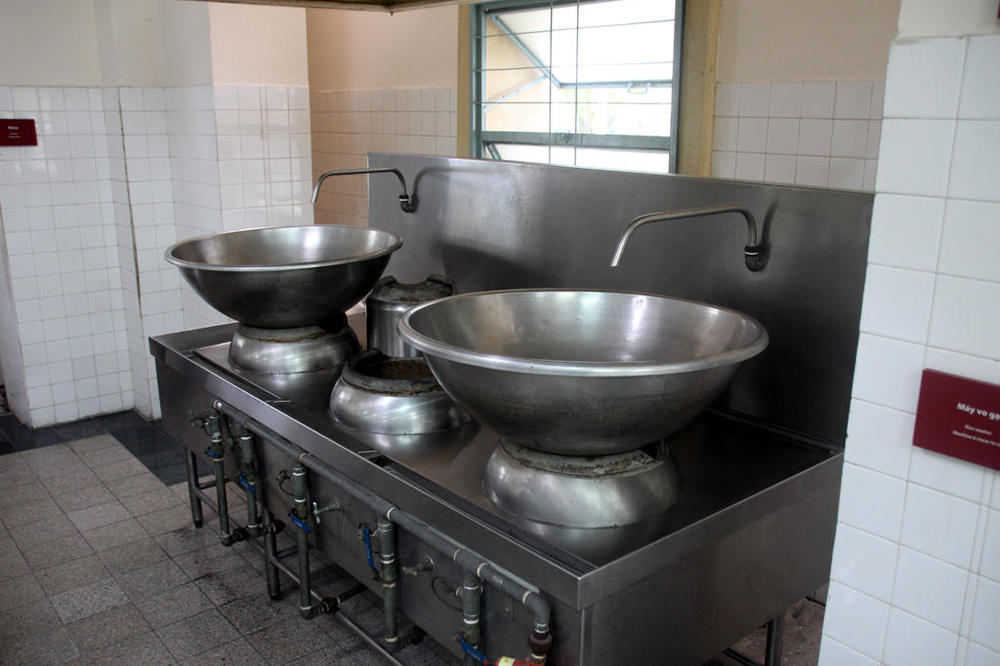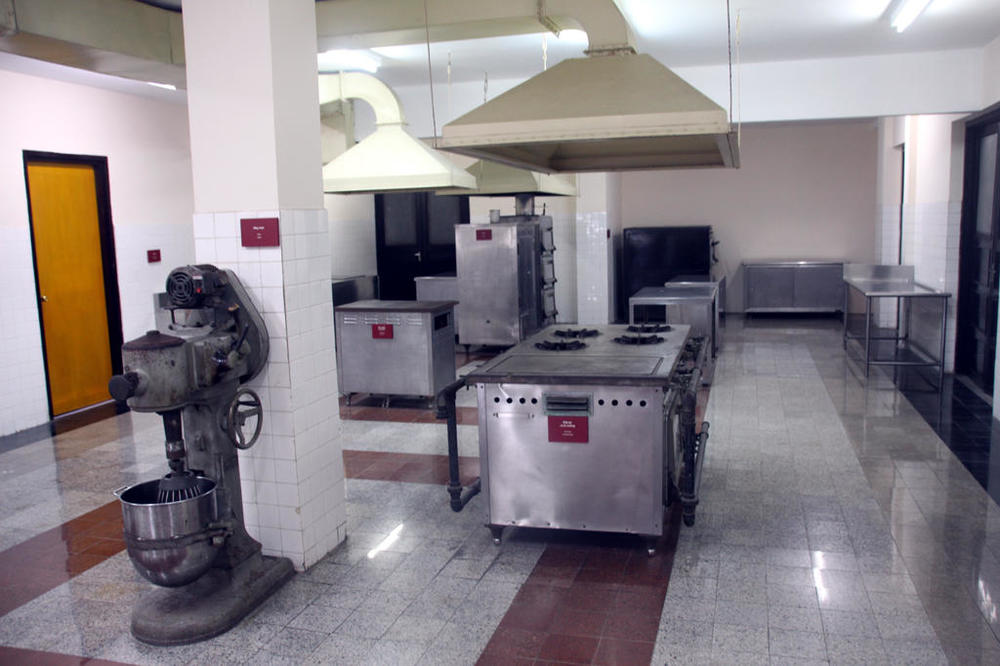Search the Community
Showing results for 'wok'.
Found 5,150 results
-
Had cooked a whole package of fresh Shanghai noodles a couple of days ago. Used the leftover up tonight with some stir-fried mixed vegetables and a whole pile of spicy tomato shrimp. I peeled hubby's shrimp, but I like mine shell on. - taste better that way. He doesn't know how to stuff the whole shrimp in his mouth then spit out the shells as I do. 🤪 Short cuts today: shrimp were seasoned, tossed with oil and cornstarch, fried up in a hot wok, then added spicy ketsup and some salsa I had left in a jar.
-
Do share what you end up making. I did similar a couple weeks ago but did not know about baking. I cast iron seared and added to noodle bowl lunches---ramen eggs, miso soup on the side. I need some new ideas. I'll start by dusting off my wok.
-
Reading about @shain's trip to Thailand had me thinking of previous travels... In particular, I was thinking about Jay Fai - a street food vendor near Chinatown in Bangkok who was the first street vendor to get a Michelin star. Long before her star though I had the pleasure of going there based on some discussions I had at the time with some Bangkok local foodies on a travel message board. She is known for using really high quality seafood in standard Thai streetfood dishes, and executing them really well. One of the dishes she's known for is her version of Tom Yum Goong - although her version is typically Tom Yum Talay since she uses a few different types of seafood, not just prawns. I had defrosted some wild caught cod from Wild Fork, and decided to make tom yum cod hang - basically tom yum flavored stir fry. Lemongrass and kaffir lime leaves from my garden. Here's some dishes from Jay Fai: And some action shots of the lady herself: Charcoal powered woks with an electric fan underneath when she wants a turbo boost
-
Elie: I'm curious about the fact that when falafel gained more wide-spread appeal among those of us without Middle-Eastern roots, the vegetarian cookbooks that helped popularize it always list chickpeas/garbanzo beans without ever referring to fava beans. At least, that's what I recall. Yet I see your recipe actually has a 3:1 ratio of dried fava beans to dried chickpeas. Would you--or anyone else--happen to know if falalfel recipes differ largely due to regional origins? Were fava beans excluded from vegetarian recipes in American cookbooks of the 70s and 80s simply because they were not as widely available as chickpeas, or...? * * * I think I've seen falafel recipes calling for chickpea flour which I have in the freezer for other uses. Since I like the coarser texture of ground soaked beans, I've never tried using the flour instead. * * * Milagai: As I said above, you can use a heavy cast iron skillet instead of a deep fryer, heating it before you begin cooking. Woks also work, though your batches would have to be smaller; it's too time-consuming for feeding a crowd but perfect if you want to keep the mixture in the fridge for a week and fry a few up when the spirit moves. Falafel turns out best when you are generous with the cooking oil, letting it form at least a thin layer that rises a bit up the sides of the pan for the sake of a crust. I use the oven to reheat patties that were cooked earlier in the week.
-
I used the recipe quoted by Boaziko (who says it is GC++ recipe from the Middle East forum) in the "tricks" thread quoted up top "My recipe of Falafel is from the time I worked at the Dorchester Hotel in London. The Egyptian chef in charge of all Oriental cuisine (apart from the Chinese off course) gave it to me. I found it very good: ½ Kilo (1 pound) Dried Chickpeas 1 White Onion ½ Kilo (1 pound) Leeks Half of the volume of the leeks – cilantro or coriander leaves 6 Tbsp Coriander seeds (Don’t mix them with white pepper corns) 2 Tbsp Ground Cumin Sesames seeds Salt 1) Soak the chickpeas for two nights in water, changing the water twice a day. 2) Chop the onion, leeks and coriander leaves. 3) Grind all ingredients; if too dry add some water. 4) Heat the oil up to 180C (= 356F) 5) Before frying roll the Falafel balls in sesames seeds" I used 1 tab salt (1 tsp of that went on the finely chopped coriander leaves and stems, which I squeezed before adding to the mix). This reecipe has no garlic, so please feel free to add it. Ended up using roughly the amount of onion/coriander given: by weight, 1 part dried chickpeas to 1 scant part total vegetables. I soaked the chickpeas for about 40 hours I guess. Ground them fairly coarsely, but a finer grind, nearer a "sandy" texture, might have been better - I wasn't sure the beans were really cooked after frying. The recipe made at least 80 walnut-sized felafel, using a 15ml measuring spoon. They need to be fried till richly brown to cook the beans throughout. The mixture sheds moisture, so there is little advantage in forming all the balls ahead of time - they were easier to handle when I formed 6 as the first 6 were frying (in a wok). I tried rolling them in sesame seeds, and also without sesame, but there was no big difference - the unrolled balls were no more fragile - and the mixture shed most of the seeds while frying. But I had heaps of cheap sesame seeds, so the visual advantage was worth it. I tried adding a little flour, but the mixture is extremely sensitive to the addition of flour - you can immediately detect the doughier, pastier texture if you eat a bean-only felafel and then one with flour. The felafel with flour take longer to brown, although they were easier to handle. The bean-only felafel are best slid gently into the oil with a mesh skimmer. For 500g dried beans, I wouldn't add more than 1 or at most 2 tablespoons of flour. Egg: you could add 1 egg to the total mix made from 500g dried beans. Again, the texture became marginally more doughnut-like, but the egg also added flavor. Although the mix was wetter, it was more robust, and could be dropped into the oil.
-
We are doing similar soon and I WILL be taking my crock pot and wok along. The ability to braise something like ribs and throw in the pot to cook while we are beaching is super. We will probably hit the local fishermen and make various seafood dishes that work for young and old as we have three little kids along. Thinking shrimp dumplings from Nguyen's book, poached flounder with lemongrass, crab (off the back dock) cakes, fish sticks for the kids and fried oysters or such.
-
I received Kenji's Wok book. Quite the tome, weighing in at 4 lbs 12 oz.
-
Kenji has a technique that I hadn't seen before, which is using a gas blow torch while wok cooking inside to give Wok Hei. I've done this and it works marvellously. With even one more tip like this, the book is going to be worth buying. For those who comment on his style, how many new techniques does he need to come up with? Even one is an advance in cooking! I see that there is an eGullet topic on this from 2020
-
Since the library is closed for our move, and I can't get a copy of The Economist to read at dinner, I've been making my way through The Wok. I haven't gotten that far yet but I see Kenji has a section on frying naked. I am so excited! Not sure if he counts a pinafore or not.
-
Sorry for not responding earlier. So far, I've just been reading and haven't cooked anything from the book yet so I've been reluctant to comment. That said, I think it's a very good book, with a lot of useful information. As someone who already owns a good selection of Asian cookbooks, I probably don't need to own it but it's so big, I'd never get through it on a library loan and I can see referring back to it from time to time, as I do with his other book, so I don't regret the purchase. As usual, Kenji has quite a lot to say about pretty much everything from buying a wok and pantry ingredients to knife skills, to the actual recipes and cooking so it's quite a comprehensive book. I happen to enjoy his writing so I've been enjoying reading. As with his Food Lab, a lot of the information I found useful is in the background materials rather than part of individual recipes so I think a person who wants to open the book to a recipe and start cooking is kind of missing the boat on this sort of book. The photos are utilitarian and tend to be small and simple. I think they serve the purpose of the book, the process photos are clear enough to see what's going on but the finished dishes aren't displayed in the highly styled glamour spreads that appear in many recent cookbooks. I'm happy to see the actual dish, cooked per the recipe rather than one where a food stylist decided to arrange a dish with ingredients that are not cut, mixed or cooked according to the recipe ....or even stuff that doesn't even appear in the recipe... for the sake of a photo.
-
My first time deep frying in my wok on induction. Worked great - so easy to control the temp and no fears of fire! Brings back memories of a snack in the old Bangkok airport. Too bad I couldn't get the real Sriracha - the last time I went to my Thai store, they were out
-
One favourite here among the rice eaters is 土豆丝 (tǔ dòu sī ) or slivered potatoes with vinegar. Several of the recipes on Google include bell peppers. Never! It is matchstick slivers of potato with chilli, Sichuan peppercorns, garlic and vinegar. Often slivered carrot is mixed with the potato, but in lesser quantities. 1 part carrot to three parts potato. 1 large potato dried chili peppers (to taste) If you can get them, dried "facing heaven chillies" are best 1 tsp Sichuan peppercorns 1/2 tbsp light soy sauce 2 cloves garlic, minced 2 tsp vinegar (most recipes recommend Zhenjiang (Chinkiang) vinegar, but I usually use white rice vinegar, instead) 1 tbsp vegetable cooking oil spring onion / scallion cilantro / coriander salt and white pepper Peel and clean potatoes (and carrots if using) and cut into matchstick sized slivers. Try to keep them all as near as possible to the same size. I suggest using a cleaver or sharp cook's knife. Food processors or other methods never work for me. Soak the potato (and carrot) in ice cold water for around ten minutes. Drain and dry with a towel. Heat your wok or skillet add oil then the chillies and peppercorns. As soon as you detect their fragrance, add the potato slivers and stir fry until they soften. Add soy sauce. Season with salt and ground white pepper. Add the vinegar, stir and serve garnished with the cilantro / coriander.
-
I hung onto one of those portable butane burners when I stopped doing catering and farmer's markets, just to have on hand. Primarily it's a winter-storm backup for cooking purposes, and I toss it in my van during winter road trips or summer camping trips for similar reasons. Haven't had to use it yet, except for camping. Also, one day I will find myself a wok with a rounded bottom*, and my butane burner will then become the wok burner. *I know, I know, I can order them online. It's been a low priority, and I haven't gotten to it yet. Someday, when the time is right, I'll need to top up an order to get free shipping...
-
Chilli Mud Crab cooked in a wok, over a fire, on the beach in Cairns
-
This is great. I just got a chance to buy life Maryland blue crabs from my asian market last week. We don't get good LIVE crab here often so I thought I'd pick out a few fiesty ones. Um... I forgot one thing. I've never cooked live crab before. Dad was always the one to kill them. I dunked the poor still fighting the tongs fellows into hot boiling water and stupidly watched them cook to death. *shudder* It's going to take me awhile to get over that one. So anyway I took them out cracked them open, chopped them into pieces with the shells still there and stir-fried them. A common Thai stir-fry for crab treated this way is to used nam prik pao (roasted chili jam). I didn't have any so I ended up just using a bit of sugar and some red pepper flakes. Talk about YUM! Recipe kinda winged it but you can wing it too: 2 crabs boiled and cut up into pieces. (Leaving them in shell makes the dish interactive) 1 large onion sliced into half moons 4 cloves garlic minced 3 TBS chili flakes (or to taste) 2-3 tsp soy sauce 2-3 tsp fish sauce 2 tsp sugar 2 eggs, beaten Oil Heat oil in wok (or large frying pan). Stir-fry onions and garlic until fragrant and soft, add crab pieces. Season with soy sauce, fish sauce, and chili flakes. Stir-fry for a few minutes as crab already cooked. Add sugar, taste. Seasoning should be strong; spicy, sweet, salty. Add beaten eggs and stir fry until egg is done. There should be a good coating of eggy goodness on the crab pieces. If I had ginger I would have added a bit of that too at the beginning. This recipe was something I just came up with and winged. Seasoning can be changed. You will want to keep it sweet, salty, and spicy. A squeeze of lime would have made this dish divine. I didn't have any and it was awesome. Serve with freshly cooked jasmine rice. Devoured in 30 minutes before realizing I should have taken a picture for egullet. It's not that photogenic though but man was it good. I might even brave killing a few crabs again just to make it again. I steamed the crab right before I cooked it so was able to leave it partial cooked. If you used fully cooked crab then only stir-fry a minute before adding eggs. This recipe could easily be done with meaty crab legs. Hope someone tries it! Oh and this method works best for those who like to suck the succulent meat from the little bits and pieces of the shells. It is not a elegant dish as it's best eaten with the hands and many a sucking sounds will ensue!
-
General Tso's Chicken zuo zong tang ji Spinach with Sesame Sauce ma jiang bo cai I do love deep frying in a wok. It addresses basically all of the things I hate about deep frying on my regular stove: quick heat-up, quick recovery time, the wok contains the splattering for the most part, and the smell stays outside where the wok burner is. So while normally I avoid deep frying things, I make exceptions here. This recipe for General Tso's chicken is good: not mind-blowing, but worth the effort, I think. It's not at all sweet or gloppy (unlike its take-out cousin here in the US), but rather has a clean flavor profile that winds up still tasting like chicken. What a concept! I was less fond of the spinach. Even using less than the total amount of sauce called for in the recipe, I still found the texture and flavor of this intensely sesame-y dish lackluster. I wonder if the sauce could be thinned with something to improve its texture and let the flavor of the spinach through a bit more.
-
It's the Big Kahuna: more info here... http://forums.egullet.org/topic/125150-wok-burner-advice-needed/
-
Chris, What wok burner are you using in the picture?
-
That makes sense given her writeup of the dish. I wonder if it's intentional. Do you find that in general her translations are literal (or are attempting to be literal)? Or does she adapt them to her audience? E.g. at least here in the US a student would refer to their teacher as "Mrs. So and So" rather than "Teacher So and So". Classic Dan Dan Noodles dan dan mian Stir-Fried Greens with Dried Shrimp bao xin cai chao xia pi Tonight's dinner highlights what a difference actually following the recipe makes! I've made these dan dan noodles several times in the past, but to serve them I always tossed everything in a wok at the end and gave it a few tosses, then plated from there. The actual recipe instructs you to sort of layer things in the serving platter, sauce on the bottom, noodles in the middle, and meat on top (OK, so I put the ya cai and green onions on top, too). This results in a much brothier dish, since of course heating everything in a hot wok results in significant evaporation, and I think the noodles also absorb more of the sauce. Anyway, the texture is very different. And better her way! I love both the dan dan noodles recipes in this book. They are very different from one another, but are both great dishes. I also served a stir-fried cabbage with dried shrimp. Wow, salty. This is another case where I need to go back and follow the recipe more closely, as it is likely that I didn't actually have 14 ounces of cabbage, and in fact may have had more like half that. The portion sizes were good as a side, but I needed to actually weigh it and reduce the other ingredients to match in this case.
-
Xie Loban's Dan Dan Noodles (Vegetarian Version) niu rou dan dan mian I posted the non-vegetarian version of this dish above. In this version dried shitaake mushrooms take the place of the beef, along with a little extra dark soy sauce. I again tried to serve this the way she instructs in the book instead of tossing it all together in the wok first. In this case the result is not so different as with the other dan dan noodles, this sauce is much less brothy. The vegetarian version is every bit the equal of the meat version, and has the added benefit of being made entirely with cupboard ingredients (which is why I made it: no meat on hand).
-
The inspiration came from http://www.foodcanon.com/2013/12/home-made-xo-sauce-recipe.html and http://www.keropokman.com/2013/05/recipe-homemade-xo-sauce.html. My final recipe was: 200g shallots, sliced finely 100g dried scallops 80g dried prawns 30g dried large red chillis, seeded and chopped 30g dried shiitake mushrooms, chopped finely 40g prosciutto, chopped finely 10 cloves garlic, crushed 2 tsp grated ginger 250ml oil 30ml sesame oil 60ml soy sauce 80ml oyster sauce Soak dried scallops in warm water for 2 hours. Drain and reserve liquid. Tear scallops into threads. Soak dried prawns in warm water for 2 hours. Drain and chop finely. Soak dried mushrooms in warm water for 30 minutes, drain and reserve liquid. Soak chillis in warm water for 1 hour, drain and blend using a small amount of water. Heat oil in wok and fry shallots till golden. Reserve shallots and most of the oil. Fry garlic and ginger till fragrant. Add blended chilli and fry for 3-4 minutes. Add prawns and fry till fragrant, adding some of the shallot oil as needed. Add prosciutto, mushrooms and scallops and continue to fry over moderate heat. Add reserved liquid, stirring continuously and add shallot oil as necessary to prevent burning or sticking. This can take 30-40 minutes until mixture is dark and well caramelized. Add fried shallots, sesame oil, oyster and soy sauces and stir till combined. Test for seasoning then put into sterilized jars. Store in fridge. Simon
-
You are asking for a lot. Ghee is easiest to make from butter. If you can find buffalo milk butter, it would make it simple. Ghee is made by first making yogurt from whole milk (buffalo or cow). This yogurt is then churned until the butter separates from the buttermilk. In India we use a ravi (a churner). They are usually made with wood or ceramic. Either is fine. It is not an easy task. I am sure one could use a kitchen aid or some electronic equipment. I have never made it from scratch this way in the US, so have no suggestion that would make it easier. The butter you get from the yogurt is placed in a kadai (wok) and melted. Once it is melted and hot, it is simmered until a brown sediment settled down at the bottom of the kadai. The top is clear and what is called ghee. As you continue to simmer, froth will from on the kadai, discard this as you go on. Cool the ghee just a little so as to make it easy to handle. Strain this into a sterilized glass jar. Use a very fine metal strainer. Cool the strained liquid and then cover and store. The liquid will begin to solidify as it cools. In most parts of the US, the ghee will harden quite a lot. But it is easy to melt it and also it keeps for years. The consistency of ghee is similar to that of margarine. The sediment that you have left can be kept aside to use for making laddoos (fudge balls). I make the laddoos by adding some ground cardamom powder into the sediment and sugar and some almond flour. This is my one big reason to ever make ghee at home. But store bought ghee is just as good.
-
After lunch, I took a short stroll down to the Independence Palace which was the official home of the South Vietnamese presidents during the war years. This is somewhere I remember from my youth, particularly 1975 when a North Vietnamese tank burst through the gates to the palace, effectively ending the Vietnam war, as depicted in this famous photograph. Today, the only things bursting through those gates are tourist coaches. To my surprise the palace offered some culinary insights. This is the state dining room. I'll let them elucidate. Also of interest was One thing confused me here. Were all the Vietnamese presidents incontinent or do they think the tourists are? I have never seen so many toilets in one building. Not requiring their facilities, I headed downstairs where I found this. Well, well. What have we here? In no particular order Fridge Cocktail Table Dish Drainer Gas Oven Ice Cream Maker Coffee Machine Dumb Waiter Mixer I'll let you guess what this is. Here's a closer look. Big Woks Not so big I then headed back to the hotel for a rest and dinner. Coming soon.
-
This is not to say what your are saying is not true. We all have different ways of using kitchen tools and appliances. I will accept and will not dispute that it has not work out for you. All I am saying is that the bamboo brush is used extensively in heavy duty commercial kitchens by the millions day in and day out. I will say further that it is used in many home kitchens as well. For them, it is a lot more than "I keep one by my decorative wok for hipster value" Don't forget, cast iron cookware and wok were first invented by the Chinese. dcarch
-
That is exactly the reason why bamboo brushes are impractical as a cast iron cleaner for home cooks. Woks see so much use in Chinese restaurants that they build up perfect patinas and virtually everything slides away. The super high heat from their rocket powered stoves I'm sure also contributes to preventing things from sticking. The woks they use are probably cheap enough that if they become warped or charred they'll end up just throwing it away and getting a new one. Not a very practical thing for a home cook. Bamboo brushes are more suited to the rounded shape of the wok anyway than the flat surface of most american cast iron cookware. In the video, it looks like he uses the bamboo brush for the exactly the same purpose and exactly the same way I mentioned. Hot pan, "deglaze" with water, sweep away the bits. The action of the brush is a sweeping motion, not an aggressive abrasive action that is required to get really charred and stuck food. The food gets mostly unstuck by flash boiling of water and temperature differential by adding water to a hot pan, not solely by the action of the bamboo brush itself. I do it all the time with my cast iron - heat it up until smoking, "deglaze", wipe out with paper towel. I'd like to see him use that brush to get out a sugary cornstarch sauce that a homecook accidentally left on a stove and burnt to to a crisp 9 times out of 10 that's what it is. A seasoning that is relatively new, one that hasn't been fully polymerized, or an uneven seasoning due to flaking or scratching. Luckily as long as you get the charred parts out, the seasoning will repair itself over time with good and proper use.

